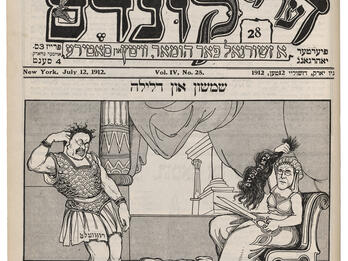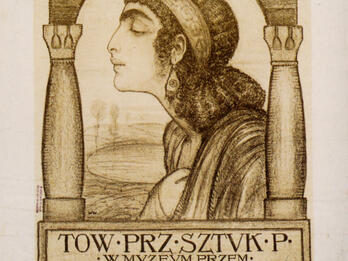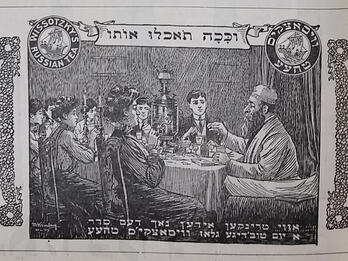Instructional Book for Small Producers: How to Make Chocolate, Coffee, and Condensed American Milk for Travelers and Home Use
Chocolate, Coffee, and Condensed Milk
To make chocolate, coffee, and milk you will need the following utensils:
A pan, galvanized on the inside, or a saucepan made of coarse tinned zinc with two iron rims and two handles with which you can place it on and remove it from the fire, and a wooden spatula. The cooking utensils must be much larger than the portions one wants to cook in them, i.e., there needs to remain plenty of empty space in them after you add all the ingredients.
You will need the following ingredients:
Sugar rocks or crystal (powdered, granulated, or unrefined sugar), cocoa, coffee, milk, kefir culture, kosher gum arabic, and eggs.
Boil the water, turn down the heat a bit, and pour the cocoa into the water gradually, then pour in the sugar and stir it. Do everything exactly as it is described below. [ . . . ]
Chocolate Powder
From the same ingredients you can also make dried chocolate or coffee, and grind or pound it finely so that it will be like powder. With or without milk, you cook it like you cook meringue (Lessons V and VI), only a little thicker. While cooking, watch out that it doesn’t burn. You don’t need egg whites and gum arabic. When it thickens, pour it into flat, smooth clean dishes or onto clean flat sheet metal and leave it in a warm (not hot) place, maybe in the sun, until it dries. When it is completely dry, grind it up into a bowl until it becomes like flour (powder).
Place a little bit of the meringue or a teaspoon of the powder into a glass of boiling water, or boiled water left to cool, and mix it well. You will get a tasty and sweet cup of chocolate or coffee.
Remark #1
Beginners who would like to create a trial sample with fewer ingredients first can work with the following measurement: 3 ounces (75 grams) of cocoa or coffee, 3/4 cups (150 grams) of milk or water and half a pound (205 grams) of sugar. Work according to the instructions in Lesson I and II.
For a cheaper version, take 2 ounces (50 grams) of cocoa or coffee, milk or water, and sugar as stated above, and cook according to the instructions in Lesson I and II.
Condensed Milk
Take 1 quart (1.2 liters or kilograms), approximately 4 cups, of clean good milk together with the sweet cream; it should not be mixed with water or anything else; 2 pounds (810 grams) of sugar, rock or crystal, and a good heap of kefir cultures. Heat the milk together with the kefir grains, stirring continuously to make sure it doesn’t burn. When the milk begins to boil, lower the heat and gradually add the sugar, stirring until the sugar dissolves completely. Once the sugar is fully dissolved, add a little more sugar and continue to stir as described above. Continue this until all the sugar has been added. When all the sugar has melted and is mixed well, turn down the heat even more and continue to stir until the milk is reduced by a third. The entire time while you are cooking the milk and the sugar, keep stirring so it doesn’t burn. Once the milk is reduced by a third, the condensed milk is ready. Cool it down in a cellar or some other cool place. Then it will thicken.
Another Way of Making Condensed Milk
Take 1 quart (1.2 liters), approximately 4 cups, of clean good milk together with the sweet cream and heat it up. Once it boils, lower the flame. Take 1 pound (410 grams) of sugar and gradually add it to the simmering milk. Stir continuously. Work according to the instructions in Lesson VIII. When all the sugar has been added, continue to cook it for 6 hours on a low flame, stirring continuously so it doesn’t burn. Then cool it down in a cold place until it becomes thick.
Take 2 teaspoonfuls of this [condensed] milk and pour it into a glass of boiling-hot water or a glass of cold previously-boiled water and mix it well. You will get a nice cup of tasty milk with sugar.
Once it has cooled, pour the above-described chocolate, coffee, and milk into tin cans. The cover of the can must be soldered so that the can remains airtight. Or, pour them into bottles or glass jars and seal well to keep the air out. Then you can keep it for a longer period and it won’t go bad.
Remark #2
The chocolate and coffee, as explained above, can be made without sugar, too. Follow the same directions, only leave out the sugar.
Booklets for Home Production
Practical Explanations for Making Wine, Fruit Wine and Drinks, Ros, Liquor, and Mead with Lots of Good Practical Advice and Tools
Vinegar—Production of various kinds of vinegar: chemical vinegar, honey vinegar, citric acid, etc.
Kvass—Production of various kinds of bread kvass, lemonade kvass, and herbal beer.
Kefir—Booklet to teach the making of kefir and artificial kumiss [mare’s milk].
Honey—Production of various kinds of artificial honey and honey in packages.
Shortening—Directions for making artificial fat for restaurants and home use.
Chocolate—Directions for making chocolate and coffee for travelers, with sugar, with and without milk, in powder form, and consolidated milk.
The Chemist—Learn quickly and easily about the following items: [how to make] ink, black and other colors, gold and permanent ink, show wax, hair pomade, copper cleaner, stamping ink, wagon oil, chocolate, ice cream, perfume, and eau de cologne by H. Leyman.
Halva—Production of all kinds of halva, white and other colors, nut and almond halva, cooked and uncooked.
Marmalade—Production of various kinds of marmalade and conserves.
Syrup—Production of all kinds of syrup, to be used with seltzer water.
Will *not* be sent cash on delivery. The cost must be sent by a deliverer. If you write with a question, please send extra postage for the reply.
Credits
Published in: The Posen Library of Jewish Culture and Civilization, vol. 7.





